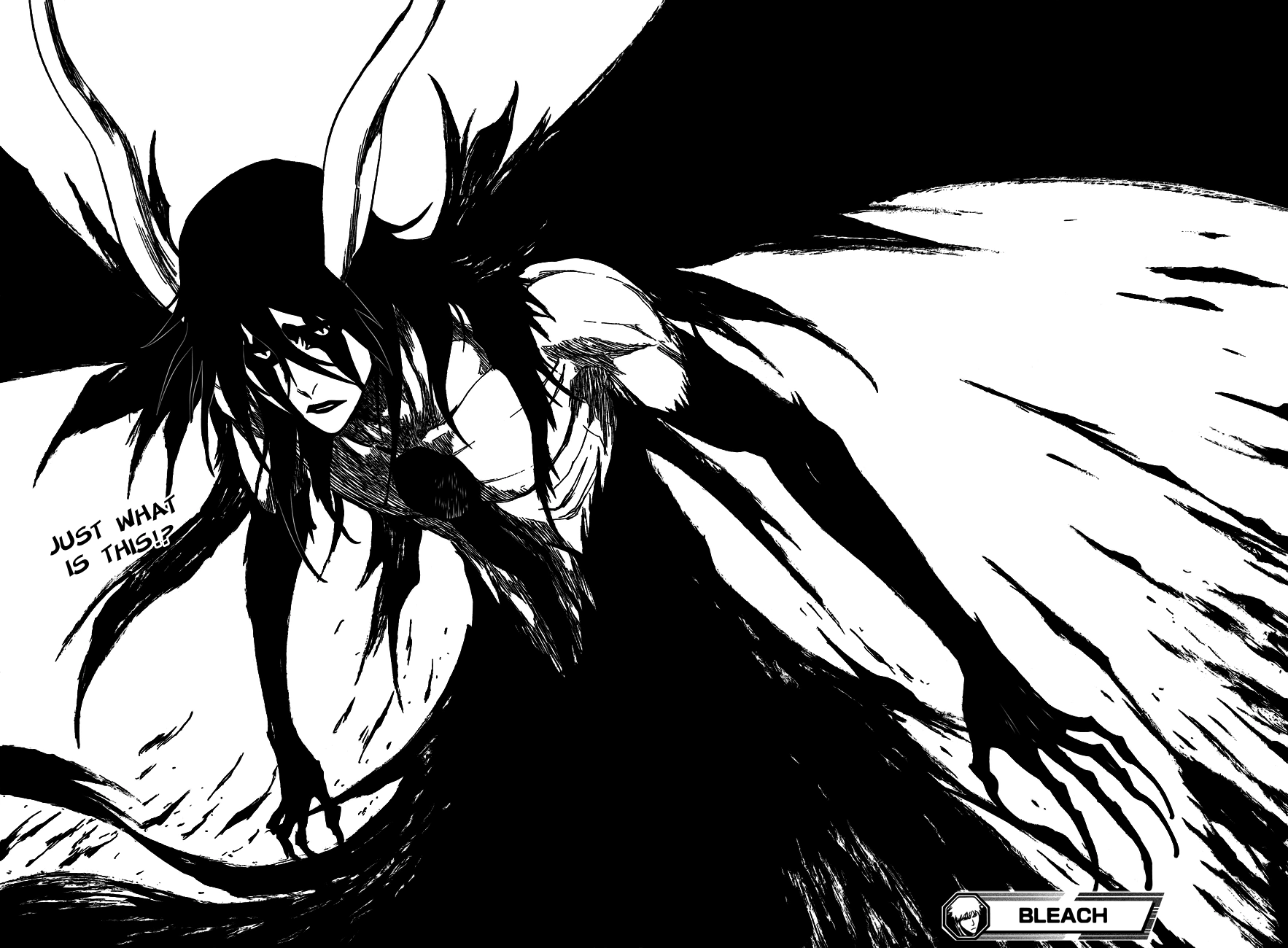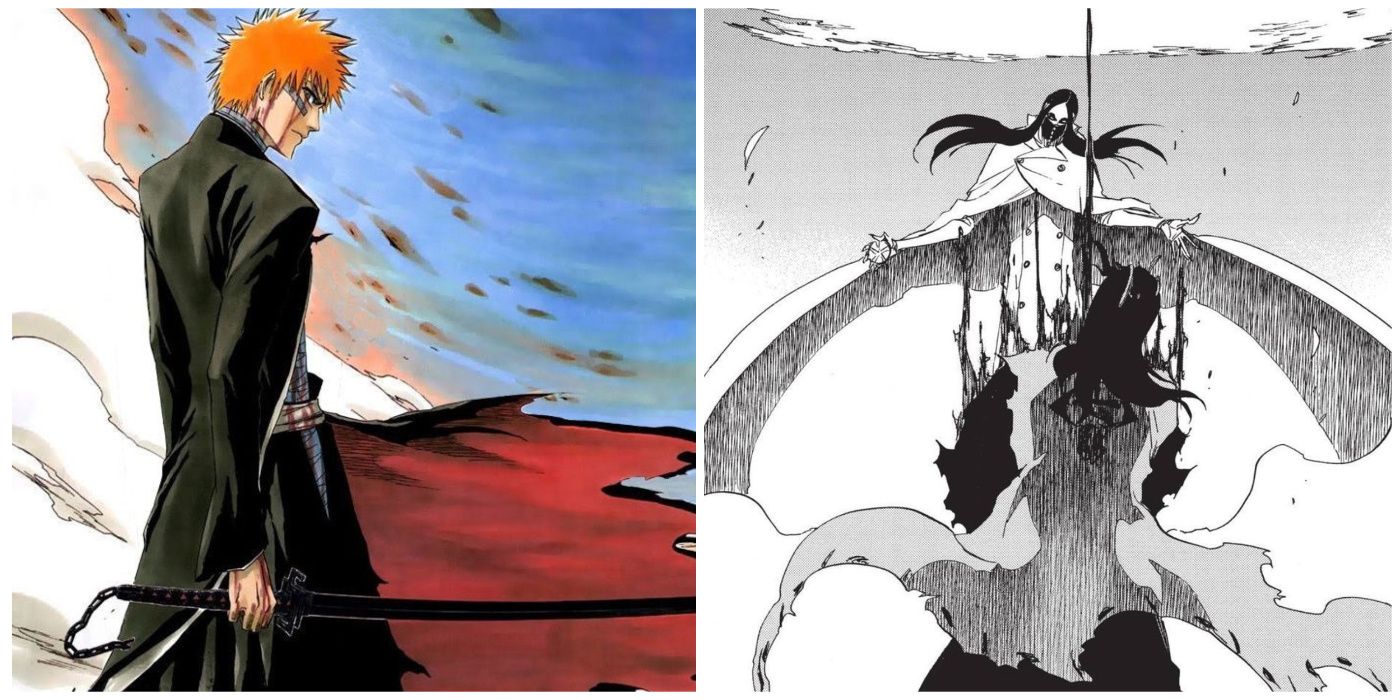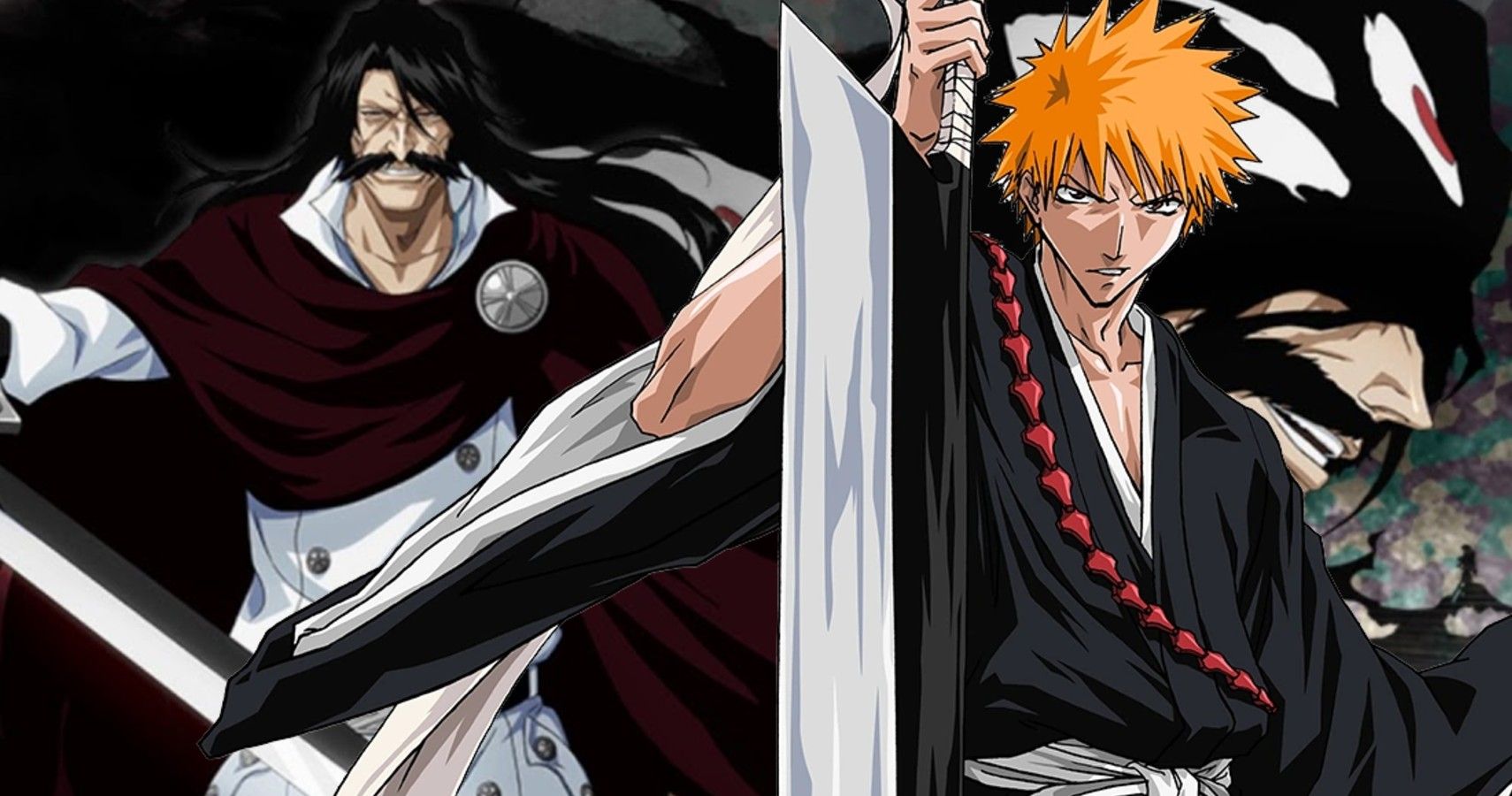Bleach manga panel? Yo, that’s way more than just pictures! We’re diving deep into Tite Kubo’s masterpiece, breaking down how he uses panels to tell a story, build suspense, and totally nail those character emotions. Think killer composition, sick color palettes, and symbolism that’ll blow your mind. Get ready to geek out!
This deep dive explores the iconic panels of Bleach, analyzing the artistic choices behind their impact. We’ll cover everything from panel composition and character portrayal to the masterful use of symbolism and visual metaphors. We’ll examine how Kubo’s style evolved, and how his panel choices influence the pacing and emotional weight of the narrative. Prepare for a serious manga dissection!
Popular Bleach Manga Panels
Yo, Bleach manga? Total fire. Kubo’s art style is straight-up iconic, and some panels just
-pop*. We’re diving deep into some of the most memorable, analyzing the techniques and impact they had on the story.
Five Iconic Bleach Panels and Their Narrative Significance
Let’s break down five panels that totally redefined Bleach moments. These aren’t just pretty pictures; they shifted the story’s momentum and character arcs.
- Ichigo’s Hollowfication: This panel, usually depicting Ichigo’s initial transformation, showcases the raw power and inner turmoil of the protagonist, setting the stage for his journey. The visual chaos mirrors his internal conflict.
- Aizen’s Revelation: The moment Aizen reveals his true intentions, often depicted with a chilling smirk and a dramatic background, is a turning point in the series. The panel’s composition emphasizes his dominance and manipulative nature.
- Ichigo vs. Byakuya: A classic battle panel showing Ichigo’s defiant spirit against Byakuya’s elegant power. The contrast in their fighting styles is visually represented, creating tension and anticipation.
- The Death of a Major Character (Spoiler Alert!): Panels depicting the death of a significant character (vary depending on reader preference) are crucial for emotional impact. The artistic choices – close-up on the character’s face, a dramatic background – amplify the tragedy and sadness.
- Ichigo’s Final Getsuga Tensho: The culmination of Ichigo’s training and struggles, often shown in a powerful, full-page spread. The visual intensity represents the sheer power and finality of the attack.
Artistic Techniques in Three Highly Praised Panels
Kubo’s skill is insane. Let’s break down three panels where his technique really shines.
- Panel 1: (Describe a specific panel, focusing on linework, shading, and use of negative space. For example: “A panel featuring Ichigo’s Bankai, showcasing dynamic linework to capture the movement and energy of the attack. The use of dark shading emphasizes the power and intensity, while the negative space around Ichigo draws the eye to him.”)
- Panel 2: (Describe another specific panel, focusing on color palette and composition. For example: “A panel depicting a quiet moment between Ichigo and Rukia, using a soft color palette to convey intimacy. The composition, with both characters close together, enhances the emotional connection.”)
- Panel 3: (Describe a third specific panel, focusing on perspective and detail. For example: “A wide shot panel of Soul Society, showcasing Kubo’s attention to detail in the environment. The perspective emphasizes the vastness and complexity of the world, creating a sense of scale and wonder.”)
Comparison of Tite Kubo’s Early and Later Visual Styles
Kubo’s style evolved over time, but his signature flair remained. Let’s compare and contrast.
Discover more by delving into berserk manga wallpaper further.
Early Bleach had a more simplistic style with less detailed backgrounds and a focus on character expressions. Later panels show a significant increase in detail, particularly in the backgrounds and environments. The color palettes also became more vibrant and expressive. While early panels had a more energetic, almost rough feel, later panels demonstrated a more refined and polished approach, without losing the raw energy.
Comparison of Five Panels: Character Expressions, Color Palettes, and Panel Composition

| Panel | Character Expression | Color Palette | Panel Composition |
|---|---|---|---|
| (Panel Description 1) | (Description of Expression) | (Description of Color Palette) | (Description of Composition) |
| (Panel Description 2) | (Description of Expression) | (Description of Color Palette) | (Description of Composition) |
| (Panel Description 3) | (Description of Expression) | (Description of Color Palette) | (Description of Composition) |
| (Panel Description 4) | (Description of Expression) | (Description of Color Palette) | (Description of Composition) |
| (Panel Description 5) | (Description of Expression) | (Description of Color Palette) | (Description of Composition) |
Analyzing Panel Composition in Bleach
Kubo’s panel choices aren’t random; they’re masterful. Let’s dissect how his layouts control the story’s pace and emotions.
Panel Layouts and Their Contribution to Pacing and Emotional Impact
Bleach’s paneling is dynamic, shifting from rapid-fire action sequences to slower, more introspective moments. For example, during intense fights, smaller panels create a sense of urgency and chaos, while larger panels emphasize key moments or power displays. In quieter scenes, larger panels and wider shots create a more contemplative atmosphere.
The Use of Gutters and Their Effect on the Reading Experience
Gutters – the spaces between panels – are crucial for pacing and flow. Narrow gutters create a faster reading experience, while wider gutters allow for pauses and reflection. Kubo expertly uses both, creating a dynamic reading experience.
Three Different Types of Panel Compositions Frequently Used in Bleach
Kubo utilizes a variety of panel compositions to create visual interest and enhance the narrative. Here are three examples.
- Action Panels: These panels typically use a series of smaller panels to depict fast-paced action sequences. The use of diagonal lines and dynamic angles enhances the sense of movement and energy.
- Close-up Panels: These panels focus on a character’s face or a specific detail, emphasizing their emotions or a significant object. The close-up creates intimacy and allows the reader to connect with the character’s internal state.
- Wide Shots: These panels offer a broader perspective, often used to establish setting or to showcase the scale of a battle. The wide shot provides context and helps the reader understand the overall situation.
Design of a Hypothetical Bleach Manga Panel Showcasing a Specific Fight Scene

Imagine a panel depicting Ichigo facing off against a powerful opponent. The panel would be a horizontal spread, emphasizing the breadth of the battle. Ichigo would be positioned slightly off-center, creating a dynamic visual. His opponent would be positioned to his right, creating a sense of tension and anticipation. The background would be blurred to emphasize the focus on the characters.
The color palette would be dark and intense, reflecting the seriousness of the fight. The panel would utilize strong diagonal lines and dynamic poses to convey the energy and intensity of the battle.
Character Portrayal Through Panels: Bleach Manga Panel
Kubo’s characters are complex, and his panels bring their inner lives to the page. Let’s explore how he achieves this.
Three Examples of Bleach Panels Effectively Portraying a Character’s Internal Conflict
Kubo masterfully uses panels to reveal the internal struggles of his characters. A few examples:
- (Describe a panel showcasing Ichigo’s internal conflict between his human side and his Hollow powers. Mention specific visual cues like his expression, body language, and the overall mood of the panel.)
- (Describe a panel illustrating Rukia’s internal struggle with her duty as a Soul Reaper and her growing attachment to the human world. Focus on visual elements like her posture, facial expression, and the setting of the panel.)
- (Describe a panel depicting Aizen’s inner conflict, if any, between his ambitions and any potential underlying emotions. Analyze the visual elements that reveal his internal state, even if subtly.)
Tite Kubo’s Use of Visual Elements to Convey Character Emotions
Kubo’s genius lies in his ability to use visual cues to communicate emotions without relying on dialogue. He uses body language, facial expressions, and even the surrounding environment to create a rich emotional landscape. For instance, a character’s slumped posture might convey defeat, while a clenched fist might suggest determination.
Key Panels Defining the Personalities of Five Bleach Characters
- Ichigo: (Describe a panel showcasing Ichigo’s determination and rebellious spirit.)
- Rukia: (Describe a panel highlighting Rukia’s kindness and unwavering loyalty.)
- Byakuya: (Describe a panel demonstrating Byakuya’s stoic demeanor and unwavering adherence to duty.)
- Aizen: (Describe a panel that reveals Aizen’s manipulative and calculating nature.)
- Grimmjow: (Describe a panel illustrating Grimmjow’s arrogant and fiercely independent personality.)
How a Change in Panel Style Can Alter the Perception of a Character
A shift in panel style can dramatically alter a character’s portrayal. For instance, a sudden shift from close-up shots to wide shots might show a character’s vulnerability or insignificance in a larger context. Conversely, a shift from small, fragmented panels to a large, dominating panel can emphasize a character’s power and dominance.
The Use of Symbolism and Visual Metaphors
Bleach is packed with symbolism and visual metaphors. Let’s uncover some hidden meanings.
Symbolism Present in Three Specific Bleach Manga Panels
Kubo uses symbolism to add layers of meaning to his storytelling. Here are three examples.
- (Describe a panel and explain the symbolism. For example: “A panel depicting a blooming flower amidst a battlefield symbolizes hope and resilience in the face of adversity.”)
- (Describe another panel and its symbolism. For example: “A panel featuring a shattered mirror might symbolize the broken trust or shattered illusion of a character.”)
- (Describe a third panel and its symbolism. For example: “A panel showing a specific character’s zanpakuto in a certain state could symbolize their inner state or current power level.”)
Examples of Visual Metaphors and Their Effectiveness
Visual metaphors are powerful tools in storytelling. Kubo frequently uses them to enhance the narrative and convey deeper meaning. For example, a character’s overwhelming power might be visualized as a storm, while their inner turmoil might be represented by a chaotic, fragmented landscape.
Recurring Visual Motifs and Their Thematic Significance
Certain visual motifs appear throughout the manga, reinforcing key themes. For example, the recurring imagery of light and darkness might represent the ongoing struggle between good and evil, while the use of specific colors might associate characters with certain traits or emotions.
Color Palettes and Their Contribution to Symbolic Meaning
Color plays a significant role in establishing mood and conveying symbolic meaning. For example, warm colors like reds and oranges might be used to represent passion or anger, while cool colors like blues and greens might suggest calmness or sadness. Analyzing the color palettes in specific panels reveals deeper layers of meaning.
Impact of Paneling on Narrative Flow
Paneling isn’t just about visuals; it directly affects how the story unfolds. Let’s look at some key examples.
Three Bleach Panels Where Paneling Significantly Impacts Narrative Pace
Kubo masterfully manipulates paneling to control the narrative pace. Here are three examples where the paneling choices directly affect the reader’s experience:
- (Describe a panel where rapid-fire smaller panels create a sense of urgency and chaos.)
- (Describe a panel where a single large panel creates a moment of suspense or revelation.)
- (Describe a panel where the transition between panels creates a jarring shift in mood or perspective.)
Comparison of Large Panels Versus Smaller Panels
Large panels are typically used for dramatic moments, emphasizing the importance of the scene. Smaller panels, on the other hand, are often used for fast-paced action sequences or to create a sense of urgency. The contrast between these sizes creates a dynamic reading experience, effectively managing the pace and emotional impact of the narrative.
The Use of Splash Pages and Their Effect on Narrative Impact, Bleach manga panel
Splash pages, large, full-page panels, are used strategically in Bleach to emphasize crucial moments, creating a powerful visual impact. These pages often serve as turning points in the story, heightening the drama and leaving a lasting impression on the reader.
Examples of How Panel Arrangement Creates Suspense or Reveals Key Plot Points
The strategic arrangement of panels is crucial for building suspense and revealing plot points. For instance, a series of panels gradually revealing a character’s hidden identity can create a powerful sense of anticipation. Similarly, a sudden shift in panel size or composition can be used to highlight a key moment or reveal a crucial plot twist.
So, yeah, Bleach manga panels aren’t just pretty pictures; they’re a crucial part of what makes the manga so legendary. From the raw power of a fight scene to the quiet intensity of an internal struggle, Kubo’s panel work speaks volumes. We’ve just scratched the surface here, but hopefully, you’ve gained a new appreciation for the artistry and storytelling genius behind each and every one.
Now go forth and dissect some panels yourself!



